How to Plan a Trip to Crete - Crete Travel Guide
Crete is the biggest of the Greek Islands and it’s blessed with an unbeatable combination of gorgeous countryside, delightful beaches, archeological treasures, and lovely, lively cities.
Located in the south of the Aegean Sea, Crete has been a strategically important base for empires and civilizations for thousands of years. Many different people and cultures have passed through here, and they have all left traces of their time on Crete in our language, culture, cuisine, and architecture.
A visit to Crete provides a unique opportunity to experience a place that blends all of those different eras and peoples together.
While you’re probably coming here for the history and the beaches, prepare to be especially charmed by the Cretan people, whose relaxed attitude and joy for life is evident. Simply put, life tastes a little bit sweeter in Crete.
More Greece travel info:
For more ideas on travel in Greece, have a look at our Cyclades islands guide and this comprehensive 10-day Athens and islands itinerary.
If you could use some one-on-one help planning your Greece itinerary, schedule a Greece travel consultation!
Table of contents
Where to stay - best bases
Transportation and how to get around
Crete itineraries - from 5 to 12 days


Help with your planning
First-time visitors to Crete often think that they’ll be able to see the whole island in just a couple days. But they quickly realize this is definitely not the case. With so much to see and do, planning a visit can be outright overwhelming, especially if it’s your first time.
So if you could use some help figuring out a great plan, consider scheduling a Greece travel consultation with our Local Expert, Luca!
These are one-hour Zoom calls where you get to chat with Luca about the trip you’re planning and he’ll share his tips and advice, answer your travel questions, and help you perfect your itinerary.
A brief history of Crete
As with anywhere in Greece, Crete has quite a long history. The island was home to the oldest recorded organized civilization of Europe, the Minoans. Around 2,000 BC, King Minoa built his palace in Knossos (not far from the modern Herakleion) and the Minoans ruled the island and surrounding seas for about 500 years.
Ancient towns such as Festos, Malia, Zakros belonged to this ancient kingdom, and their ruins can all be explored by visitors today. In Greek mythology, Crete is the birthplace of the god Zeus and home to the mighty Minotaur, which was half-human and half-bull, and protected the princess Ariadne.
In around 1450 BC, the Mycenaeans (another Greek kingdom) arrived in Crete, and conquered the island, leading to the downfall of the Minoan civilization. The Mycenaeans kept control here for about 1,500 years, until the arrival of the Romans in 66 BC. Later, the control of Crete passed to the Byzantines in 400 AD (more or less).
From 400 AD until 1200 AD, Crete remained under Byzantine rule, except for a 140-year period when Arab armies conquered it (approximately 820 to 960 AD).
In 1204, the Crusaders sold the island to the Venetians, who kept control until 1669, when the Ottoman siege finally succeeded and the island fell. For the next 200+ years, Crete formed a part of the Ottoman empire. Finally, in 1913, the island formally became a part of Modern Greece.
So, from Minoans to Mycenaeans, Romans to Byzantines, Arab powers, and Venetians to Ottomans, Crete has been ruled and influenced by many historical powers. Evidence of each of these empires and civilizations can still be found in Crete today, whether it’s in the island’s historical monuments, architecture, cuisine, culture, or language.
Best time to visit
Because of its nice weather and fantastic beaches, Crete is most popular as a summer destination. That means that July and August are by far the busiest months to visit. During this time, you will be sure to experience sunny days and warm weather, making it the perfect time to be at the beach.
So, if your primary motivation for coming here is to relax in the sand, summer is a good bet.
Of course, this also the period when the island is most crowded, and prices shoot up for just about everything. Fortunately though, unlike with some of the smaller Greek islands where everything sells out and you find yourself walking shoulder to shoulder with hordes of people at all times, this doesn’t happen in Crete.
Because of the size of the island and the number of attractive cities and towns to stay in, the crowds are rarely overwhelming and accommodation, car rentals, tours/activities, and restaurants are unlikely to sell out. You shouldn’t have trouble renting a car or finding a hotel even at the busiest time of year here.
Visiting in late spring or early fall (shoulder season)
If your schedule is flexible though and you don’t need perfect beach weather guaranteed, you might prefer to visit in late spring (May and June) and early fall (mid-September through October).
The weather is not as hot in these months, but it’s still very comfortable for going to the beach and is much more pleasant for exploring the cities, natural areas, and archaeological sites.
As for crowds, summer vacationers have either not yet arrived or have already departed, which means that traffic on the roads is not bad at all, beaches aren’t filled with people, you’ll be able to enjoy our historical sites without hordes of other tourists, and prices for everything drop off steeply.
Crete has a lot to offer beyond just the beaches, so a spring or fall visit is highly recommended. And if the weather cooperates, you’ll still be able to hit the beach too!
How long to spend on Crete
For a first-time visitor looking to experience a mix of Crete’s history, culture and cuisine, nature, and beaches, 7 to 10 days is just about the perfect amount of time to spend here.
With a week to a week and a half, you’ll be able to see a good chunk of the island, and will have time to move between a few different bases, exploring the surrounding areas. You won’t get to comprehensively cover each place, but that’s probably not your goal anyways.
In 7 to 10 days, you can do a good mix of activities as well, ranging from exploring historical sights like the Palace of Knossos and Heraklion Archaeological Museum, wandering the charming Venetian streets of Chania and Rethymno, getting out to the Samaria Gorge and White Mountains, and relaxing on beaches like Elafonissi and Balos.
You can do all of this in just 7 days, but you would be rushing a bit to fit it all in, which would take away from the experience. Remember, part of the pleasure of being on Crete is enjoying the lovely pace of life and the island’s relaxed energy.
So, if you take the full 10 days to visit the island, you can do everything mentioned above (and probably a bit more - visiting some local villages would be a good idea), but will be able to do it at a relaxed pace, enjoying yourself and slowing down to take it all in.

Connect with a Greece travel expert for help perfecting your itinerary, answers to all your travel questions, and fabulous local tips for a better visit!
How to get to Crete
Crete is a popular destination all throughout Europe (and the world), and as such has direct flights between a host of European cities/countries. If you’re coming from another continent, you’ll likely have to transfer at one of these other European airports or in Athens.
Domestically, the island can be reached by sea and air from Athens, and by air from Thessaloniki.
From Athens, there are multiple daily ferries and a host of flights. Thessaloniki has no direct ferries to Crete, but flights depart quite frequently.
Where to buy ferry tickets
To check schedules and prices, I recommend using Ferry Scanner which is an aggregator that shows options from a bunch of different ferry companies. Their schedules are always up to date, it’s easy to use, and the price difference between using them and booking direct is negligible.
Getting to Crete from Athens by ferry
Ferries connect Crete with Pireaus (Athens’ port) multiple times per day, with the frequency of departures increasing during the summer months. The voyage usually lasts 6.5 to 9 hours and your final destination can be any one of the three major cities: Herakleion, Rethymno, or Chania (Rethymno is not always an option, so be sure to check this carefully).
The ferries often travel overnight, departing from Athens in the late evening and arriving in to Crete in the early morning. If you’ll be traveling overnight, it would certainly be most comfortable to book a cabin, so that you have a bed for the night.
One-way tickets can cost anywhere from about $40 to $150 USD depending on when you book and what class of ticket you opt for.
Getting to Crete from Athens by plane
There are many daily departures from Athens to Crete’s two airports in Chania and Heraklion. Flights are often quite inexpensive as many low-cost airlines run this route, and one-way tickets can cost as little as $30 USD. There are departures all throughout the day.
Getting to Crete from Thessaloniki by plane
As with Athens, there are frequent daily departures from Thessaloniki to Crete’s two airports in Chania and Heraklion. Planes leave all throughout the day and low-cost airlines operate the route, so tickets are often very affordable.
A tip about onward island-travel from Crete
Crete is also connected by ferry with the islands of Kassos, Karpathos, and Rhodes, as well as with Santorini in the summer.
Recently, a new ferry route has also been introduced which runs from Pireaus (Athens) to the islands of Syros, Tinos, Paros, Naxos, Mykonos, Santorini, Crete. If you’re planning some island-hopping, this route is a perfect option for getting from one island to the next, and you can pick it up in Crete to head on to other destinations.
Travelers can also fly direct to Rhodes and Cyprus from Crete, with domestic flights, in addition to Athens and Thessaloniki.
Where to stay in Crete - best bases
The regions of Crete. Photo: Saqib Qayyum, CC BY-SA 3.0, via Wikimedia Commons
Assuming your visit to Crete will be about 7 days, I would suggest staying in or near the major cities of Chania, Heraklion, Rethymno, and Lasithi. Staying in these cities or the surrounding areas will make it easy to do lots of sightseeing without having to cover hundreds of kilometers in the car.
Ideally, so that you can see as much as possible, you’d stay 3 nights in Heraklion (the center of the island), 2 in Rethymno (center-west), and 2 in Chania (west).
Heraklion - in the center east
Photo: NiTenIchiRyu, CC BY-SA 4.0, via Wikimedia Commons. Cropped from original
In the center-east of Crete, Heraklion is a lovely historic city with a ton to see and do right within its urban area. There are archaeological sites, medieval fortifications, lovely neighborhoods, great restaurants, and the sea all at your fingertips. It’s also the biggest city in Crete.
There are also an absurd number of places worth visiting within an hour of the city. There are delightful traditional villages that will transport you back in time. Depending on what you’re looking for, there are coastal towns, ones in the countryside, on the coast, and on the lakes. It’s pretty amazing.
Of course, you’ll also find plenty of great beaches, ancient Greek and Roman ruins, and beautiful natural areas to explore. You could easily spend your entire week just exploring this area!
Rethymno - in the center west
Photo: Moonik, CC BY-SA 3.0, via Wikimedia Commons. Cropped from original
A little over an hour west of Heraklion, Rethymno is another lovely city with an old-world ambiance. The city has a wealth of well-preserved medieval architecture, and as you wander through its historic center, you’ll find Venetian fortifications, Ottoman mosques, and elegant old mansions side by side.
The harbor is especially lovely, from where you can grab a seat at a bar, restaurant, or cafe, and admire the busy waterway with boats coming and going constantly.
Outside of the city, there are nice villages like Anogeia and Spili, gorgeous beaches and spectacular scenery around the coastal town of Plakias, and the tranquil Amari Valley.
The Rethymno area has its share of ruins and archaeological sites as well, of course (this is Greece after all!), and there are great hiking opportunities in the Kourtaliotiko Gorge.
Chania - in the west
On the western side of Crete, Chania, sometimes referred to as the "Venice of the East," is without question one of the most beautiful towns in Greece. It’s also the second biggest city in Crete.
Chania’s colorful Old Town is wonderfully preserved, and the Venetian Harbor is an absolute treasure. The Venetian lighthouse is an iconic symbol of the city, and a walk along the water out to it is a must when visiting.
As with Rethymno, you’ll find traces of the many civilizations that have passed through here, and a walk through the old town will take you past buildings built in the Venetian, Ottoman, Neo-Classical, and traditional Greek styles.
Beyond the city itself, you can visit monasteries, caves, and beaches in the Akrotiri Peninsula, explore ancient ruins in Aptera, go for boat trips on the Balos Lagoon, wander through villages in the foothills of the White mountains, and go hiking in the Samaria Gorge.

Transportation and how to get around in Crete
A windy stretch of road in Crete. Photo: Sorin Craciun, CC BY-SA 3.0, via Wikimedia Commons
Crete is a big and long island with two major mountains dividing it. The mountainous terrain means there are many amazing gorges, plateaus, caves, and flora, which are an absolute delight to explore.
However, the mountains and their foothills also create challenges for building roads and direct routes between places, which means that even traveling short distances can be quite time consuming.
Think of it like this: traveling from one end of the island to the other along the northern “highway”, which is not interrupted by any mountains, will still take you about 5 hours.
If you want to head inland at all, you’ll have to contend with those mountains, hills, ravines, and gorges, and even very short distances will take you quite a while as you’ll be traveling on indirect routes along little windy roads.
So, my recommendation is to choose a few bases, and make day trips from each to the surrounding areas of interest. Trying to get everywhere, from one place will just mean too much time driving and not enough time enjoying yourself.
Renting a car
It’s always my recommendation to rent a car when visiting Crete. While there is public transportation on the island, and you won’t need a car at all in the cities, if you want to get out to the best beaches, go hiking in the mountains, visit archaeological sites, and get off the beaten path, you will absolutely need your own car.
A big part of the pleasure of visiting Crete is exploring the beautiful countryside, the remote nature, and the traditional villages, and having a car will give you the ability to get to all of these places and to visit them at your own pace.
Car rentals are available in the airports and in the big cities, and you’ll find all of the big international companies as well as many smaller local ones. Rates vary enormously depending on the company you go with, the type of car you rent, and the time of year.
One thing that never changes though, is that car rentals sell out quickly in July and August, so if you’re planning a summer visit, you need to book the car well in advance (ideally, as soon as you book your flight or accommodation).
Where to find a car rental
For the best selection of cars, you’ll want to look at renting in Heraklion, the island’s capital and where the busiest port and airport are located. However, you also have plenty of options in Chania, and an ok selection in Rethymno.
To check prices and book, I recommend using the following two car rental websites:
DiscoverCars includes offerings from all the major international rental companies as well as lots of smaller local agencies, which often have much better pricing. You can often find great deals.
AutoEurope tends to be more expensive, but they only list options from large, well-reviewed companies and their customer service is excellent. Their deals often include “zero deductible” (i.e. full coverage) rental insurance.
Driving in Crete
It is highly recommended to have a physical map with you at all times when driving, even if you'll have Google maps or other navigation devices. There are lots of areas in Crete where there’s no cell service, so if you make a wrong turn, close out the app, or need to adjust your route, you’ll be out of luck.
Check the distances in advance, and always expect to spend more time on the road than the app tells you, either because you won’t be able to drive nearly as fast as the app expects (narrow, windy roads) or because of rush hour traffic.
Driving in Crete isn’t exceptionally difficult or anything like that, but the roads aren’t all in great condition, they’ll often be quite windy, and you’ll be surprised at how narrow some stretches are for what is ostensibly a 2-lane road.
Also, drivers here can be very aggressive and rather uncourteous. Even if they know the rules and proper driving etiquette, they’ll often disregard them. Just be careful, stay calm, and take it all in stride.
Parking
Finding parking spots in the cities can be very difficult to find, as well as at some of the more popular beaches. Spots are limited and fill up quickly, so just be prepared for this. You may have to circle a few times or park a bit further away than you’d like.
Taking public transportation in Crete
As mentioned above, Crete has some public transportation, but it’s really not ideal for visitors.
Local buses
All of the major cities have local buses that will take you around the city, although you’ll probably find yourself walking most everywhere (the cities here are very walkable and they’re not that big). Local buses run frequently all throughout the day and are quite inexpensive.
Suburban buses
For getting out from the cities to nearby places of interest, there are suburban buses that connect each city with the surrounding villages and some of the natural areas (beaches, gorges, mountains, etc.) that you may be interested in.
The buses may make frequent stops though, and they won’t run terribly regularly, so you’ll probably waste a lot of time on the bus as well as waiting for it.
Intercity (long distance) buses
There are also longer-distance buses that connect each of the major cities with one another. These run fairly frequently (about once per hour) and can actually be decent options if you’re just planning to move from one city to another.
Long distance buses can be booked online in advance, and you should definitely reserve ahead of time if visiting in summer.
Taxis
Taxis are everywhere within the major cities and towns, but for city touring, the distances are very easy to walk. If you decide not to rent a car, you could take taxis out to the beaches, or other areas, but you’ll often need to arrange return transportation in advance, especially if you’re going somewhere a bit more out of the way. This will also get expensive quickly.
Best places to visit in Crete
As mentioned a few times already throughout this article, Crete is a big island, so unless you’re planning on visiting for quite a while, you won’t be able to get everywhere and do everything.
So, considering that you’ll probably be choosing one or two bases in different parts of the island for your visit, we’ve broken down Crete’s top attractions according to the region they’re in.
Where you can go during your trip will depend on where you stay, and how much time you’re willing to spend in the car.
Heraklion region
1. The city of Heraklion
Herakleion is the most populated city of Crete and you can find the archeological Museum is in the city center and Koules fortress is in the port (it’s open to visitors from 8:00 to 20:00. It is the best early evening walk as close to eat there are many restaurants, taverns and cafes).
The Cathedrals of Saint Titos and Agios Minas confess the difference of the people who lived here. A walk along the city walls is as wonderful as the little hidden cafes within them. Colorful corners are full of little places with traditional food and live music.
2. Ancient Knossos
Knossos is the ancient town of King Minos and the Minoan Palace ruins stand there to tell their story. You can walk around the place where people developed a sophisticated civilization that once thrived and learn what stories Greek mythology shares for the Labyrinth of Minotaur, the half-human, half-bull monster who protected princess Ariadne.
It’s very useful to book a guide or use an app to understand better what you see. Try to avoid visiting in the afternoon hours as it is very hot and there are only a few trees.
3. The villages of Archanes and Arolithos
Archanes is an ancient village that exudes tranquility and historical allure. It is hidden in vineyards and olive trees and apart from a wonderful that will make you feel like you are years back and the hospitable restaurants, you can find and buy olive oil and wine straight from the source!
Arolithos, a traditional village created in the standards of the previous century, offers an authentic glimpse into the island's cultural heritage. In there you can find a traditional café and restaurant that offer traditional and more modern tastes as well as accommodation.
With its well-preserved architecture, local crafts, and warm hospitality, visitors can immerse themselves in the timeless ambiance of rural Crete.
4. Matala village and beach
Matala is a very well known village and beach, with the famous curved caves on the side of the mountain, that hippies loved in the 60s-70s. The caves were not always there, as the Venetians created the to have a safe place to be used as an observatory for hostile ships.
During WW2 they were used to hide weapons and people to protect possible disembarkation. There was supposed to be an entire network with catacombs there but it was never fully discovered.
5. Zaros village and lake
The village of Zaros is a peaceful retreat for nature lovers, with scenic hiking trails and the opportunity to indulge in local organic products. The picturesque lake adds to the charm of this hidden gem.
6. Malia and Hersonissos
These two coastal towns known for their lively nightlife and entertainment. Besides the typical touristic scene, they offer beautiful beaches, water sports, and various tourist attractions, perfect for both excitement and relaxation.
7. Anogeia and Arkhalochori villages
These traditional villages represent the authentic charm and cultural heritage of Crete. Anogeia is located on the mountainside, offers a glimpse into Cretan folklore and became a symbol of resistance during the revolution.
Arkhalochori enchants visitors with its well-preserved architecture, local artisanship, and warm hospitality, providing an opportunity to experience the island's rural lifestyle.
8. Fodele
A picturesque village famous as the birthplace of the renowned painter El Greco, Fodele is well worth a visit. Surrounded by lush greenery and orange groves, Fodele offers a peaceful atmosphere. Visitors can enjoy leisurely strolls, visit local artisans, and explore the workshop and early life of the artist.
9. Festos and Gortyna archaeological sites
These two significant historical sites speak of Crete's ancient past. Festos is the place the famous “disk” with first writing was discovered, while Gortyna unveils the remnants of an ancient Roman city. History enthusiasts will be thrilled!
Beaches: Helidoni, Arena, Agia Pelagia, Matala, Agia Galini
Helidoni and Arena are organized beaches and very close to the city. Agia Pelagia is known for its crystal-clear waters and family-friendly atmosphere. Matala, and Agia Galini are voted as the best ones of the south Heraklion region.
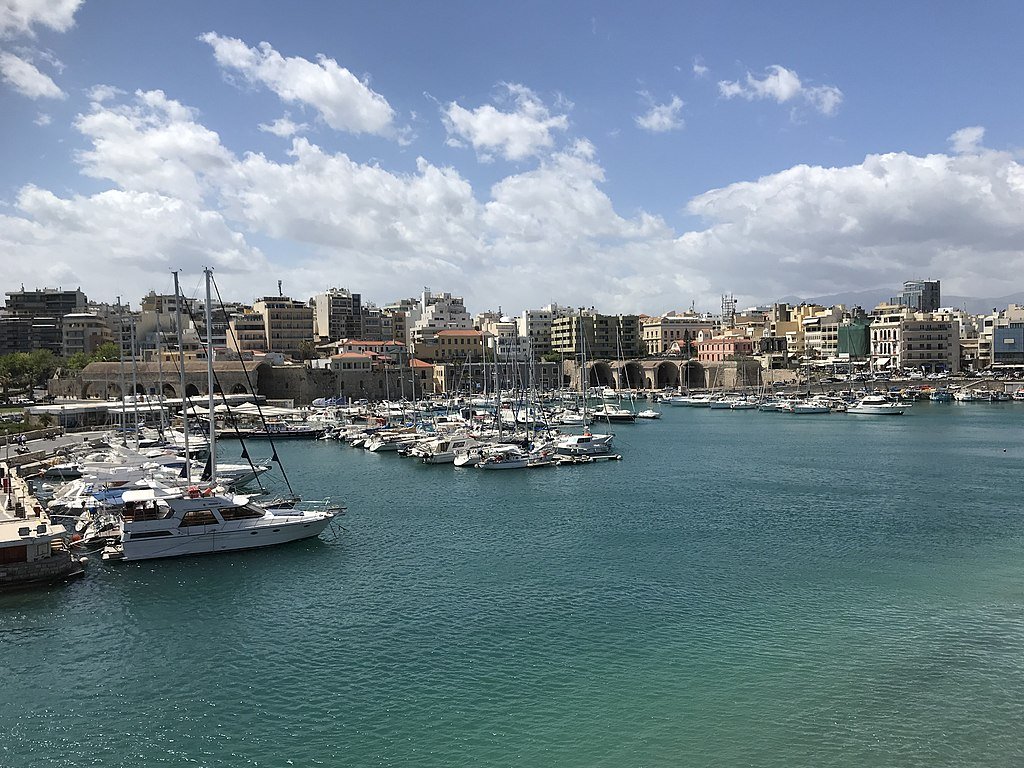

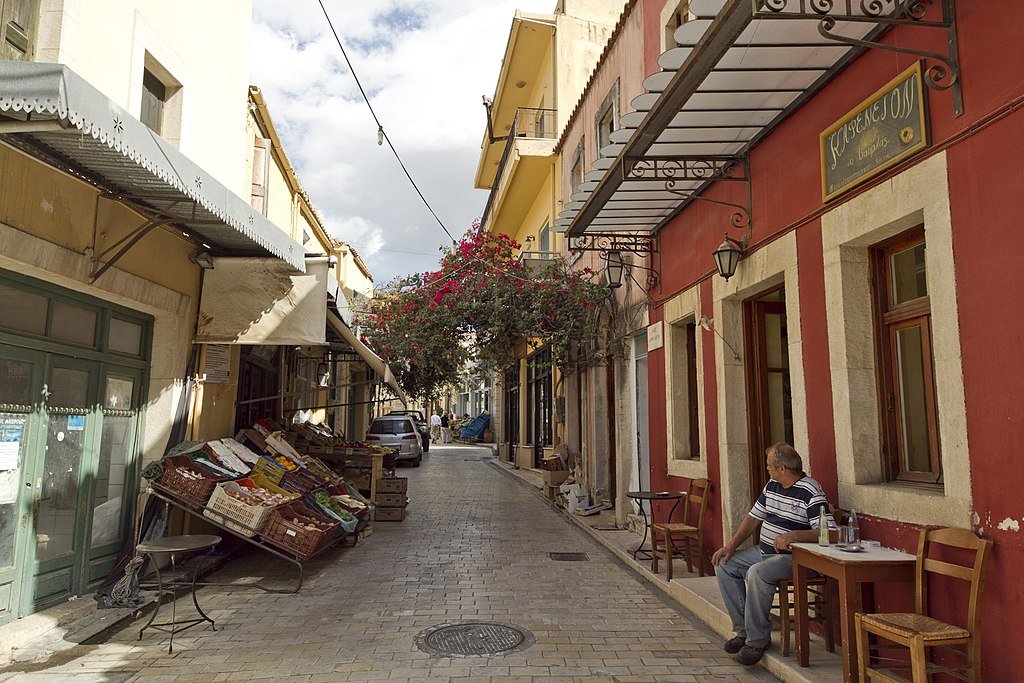

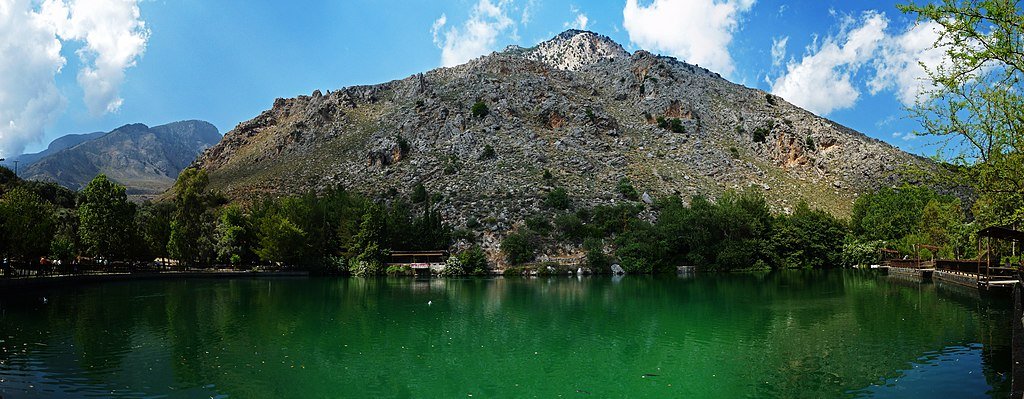
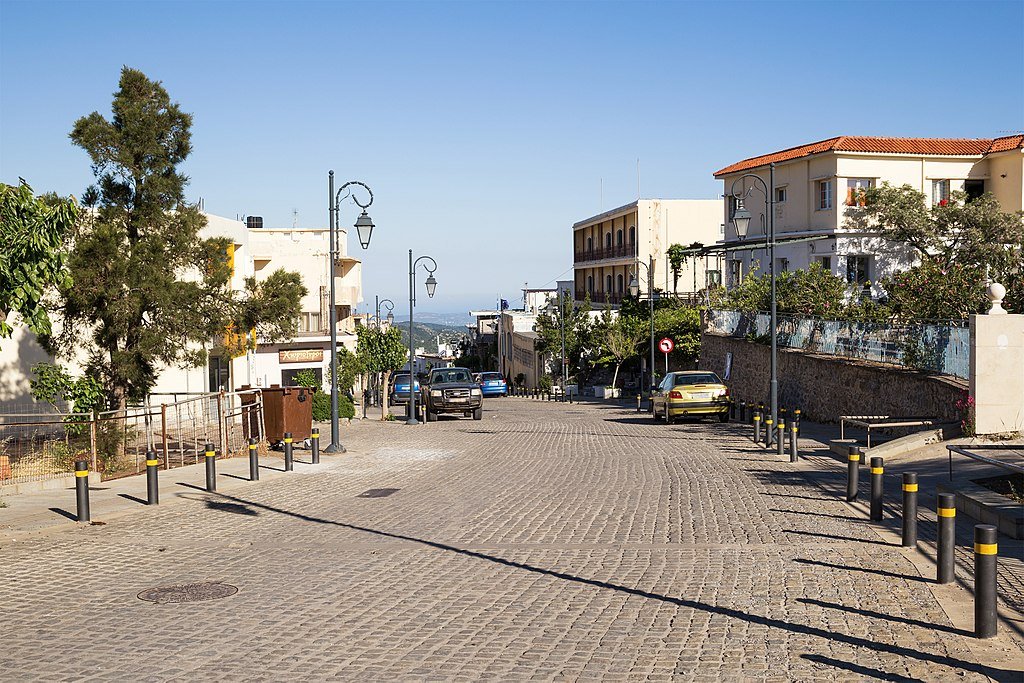
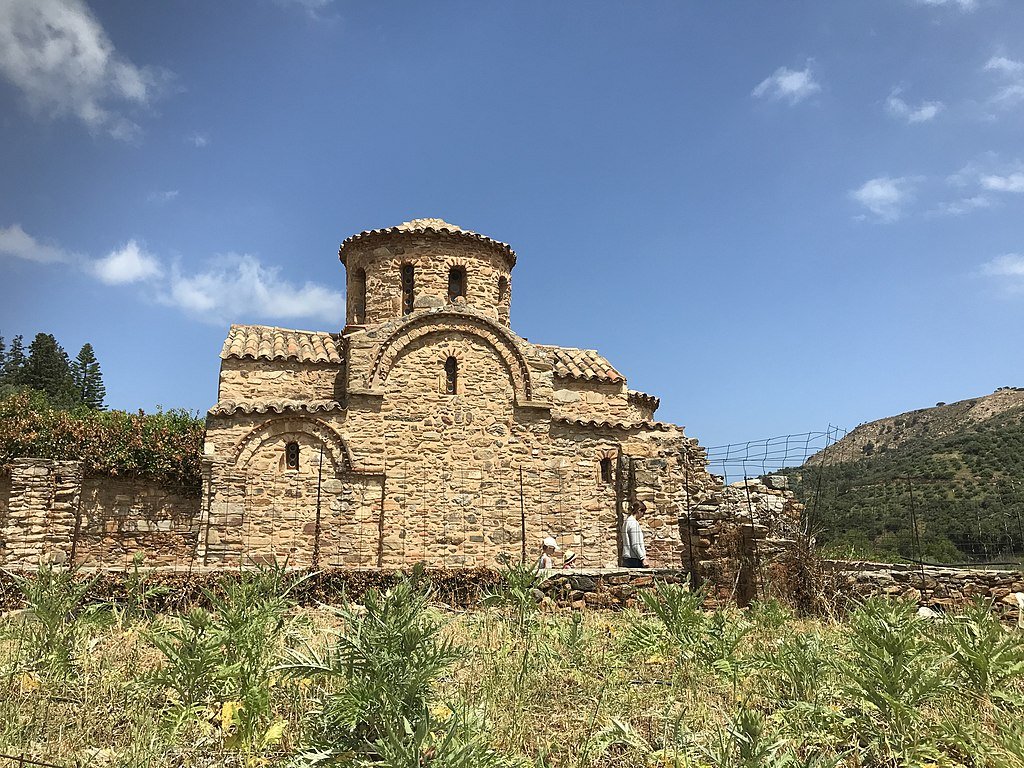
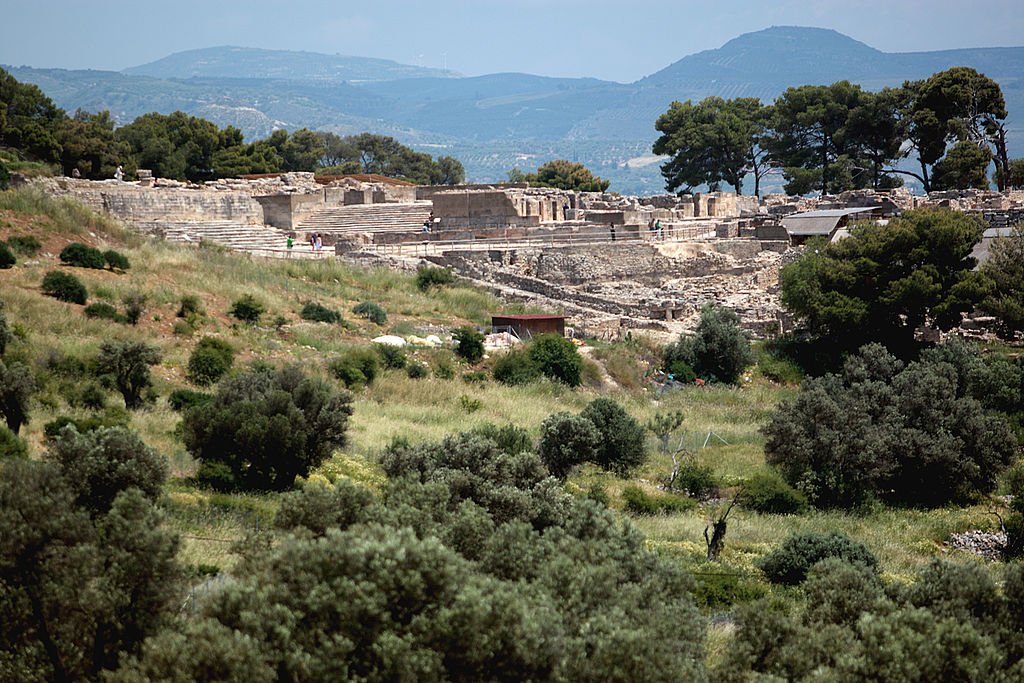
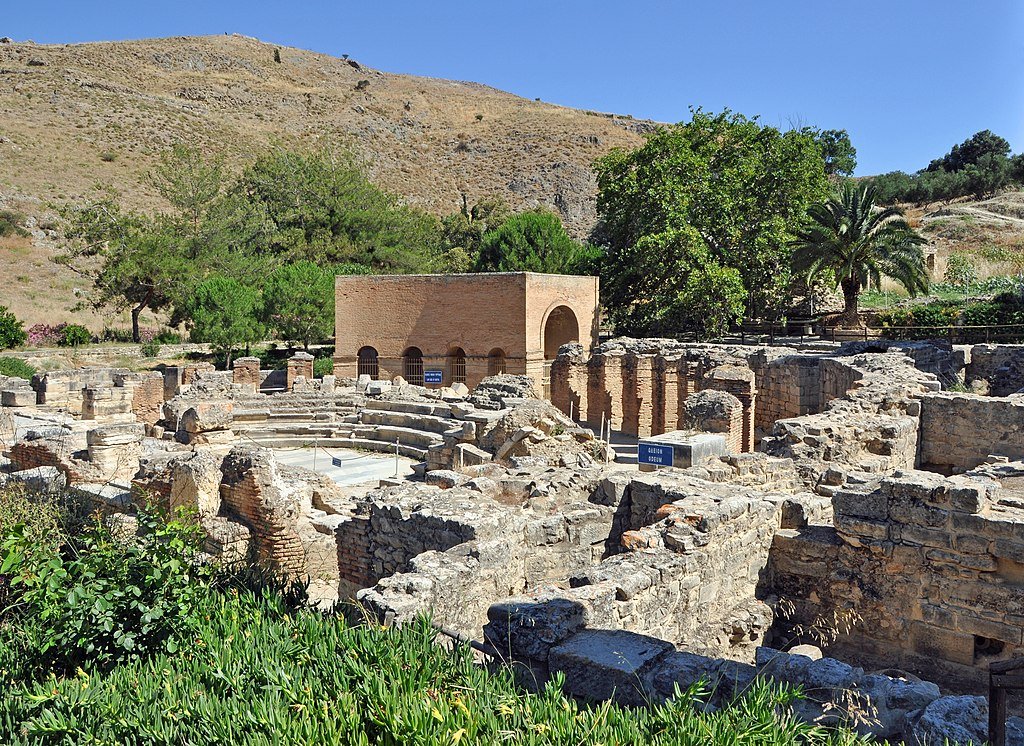

Connect with a Greece travel expert for help perfecting your itinerary, answers to all your travel questions, and fabulous local tips for a better visit!
Rethymno region
1. Rethymno
Rethymno is a captivating city that seamlessly blends its rich history with a vibrant modern atmosphere. The Old Town is a maze of charming alleys, adorned with Venetian and Ottoman architecture, ancient churches, and picturesque squares.
Visitors can explore the imposing Fortezza fortress, stroll along the scenic Venetian Harbor, and indulge in delicious Cretan cuisine at local taverns. Rethymno is famous for its nightlife with bars and clubs near the sea.
2. Prevelis beach
This lovely beach offers a tropical paradise with palm-lined shores, a serene lagoon, and the convergence of the Libyan Sea and a freshwater river. Perched high above the beach, the 17th century Preveli Monastery adds historical and spiritual significance to the landscape, providing a peaceful retreat with stunning views of the coastline.
3. Plakias
Plakias is a picturesque coastal village that offers a perfect blend of natural beauty and tranquility. With its stunning beaches, crystal-clear waters, and scenic landscapes, Plakias is a paradise for beach lovers and nature enthusiasts looking to unwind in a peaceful setting.
4. Sfakia/Loutro Sfakion
This is a rugged region of Crete known for its independent spirit and traditional customs. Surrounded by dramatic mountains and crystal-clear waters, it offers an authentic taste of Cretan culture and cuisine, along with opportunities for outdoor activities and exploration.
From here, you can make a day trip by boat to the small and unspoiled island of Gavdos, the southernmost point of Greece.
5. Arkadi Monastery
The monastery is an iconic symbol of Cretan resistance and freedom. Its history is steeped in heroic tales, and the monastery's architecture give the perfect combination of Renaissance, Baroque, and Venetian styles. You can explore the museum and feel the devoutness.
6. Kournas Lake
The only freshwater lake in Crete, Kournas Lake provides a completely different scene from what people expect to see in an island. Surrounded by verdant hills, the lake's tranquil waters invite visitors to relax, paddle, or simply enjoy a leisurely walk along the shore.
7. Argyroupoli
Argyroupoli is famous for its refreshing springs, ancient Roman ruins, and traditional taverns where visitors can taste local delicacies next to small waterfalls.
8. Georgioupoli
In addition to its beautiful sandy beach, in the village of Georgioupoli is host to Crete’s only traditional bakery that uses olive pits instead of wood to bake bread and rusks.
Rethymno
Plakias Beach. Photo: Uoaei1, CC BY-SA 4.0, via Wikimedia Commons. Cropped from original
Arkadi Monastery
Waterfalls in Argyroupoli. Photo: Olaf Tausch, CC BY 3.0, via Wikimedia Commons. Cropped from original
Pervelis beach
Sfakia. Photo: Tango7174, CC BY-SA 4.0, via Wikimedia Commons. Cropped from original
Kournas Lake
Georgioupoli beach. Photo: trolvag, CC BY-SA 3.0, via Wikimedia Commons. Cropped from original
Chania region
1. Chania
Chania (pronounced more like Khania) is an enchanting blend of history, culture, and natural beauty. The Old Town is a maze of narrow streets with Venetian and Ottoman buildings, ancient churches and little shops.
Visitors can explore the iconic Venetian Harbor, visit the impressive Maritime Museum, and taste Cretan cuisine at the local taverns and restaurants. Nightlife is also vibrant here.
2. Balos Lagoon and Gramvousa Island
Located on Crete's northwest coast, the Balos Lagoon and Gramvousa Island form a magical landscape of turquoise waters and golden sand dunes. Accessible by boat daily from Kissamos or by a combination of car and hiking (only to the lagoon), this remote paradise offers a unique opportunity to swim in almost tropical beaches, explore ancient ruins, and admire breathtaking panoramic views from the Venetian fortress atop Gramvousa.
The places are protected by the program Natura 2000, which means there are no beach bars, cantines or…phone reception!
3. Elafonissi beach
Elafonissi is famous for its mesmerizing pink sand beaches and the shallow, crystal-clear waters are perfect for swimming and snorkeling. It takes around 50-60 minutes to get there from Chania and you can choose to stay in the organized part (where there are beach loungers and umbrellas) or bring a towel and set down elsewhere.
There are beach bars and and canteens in case you need a snack or a drink.
4. Falassarna beach
Falassarna is one of the best beaches in the island. The beach is fully organized with restaurants, beach bars and umbrellas and loungers, but it’s long enough that you can also escape to empty stretches where you can set down on your own.
5. The villages of Vamos, Omalos, and Therisso
These three villages are nestled in the lush foothills of the White Mountains, and each offers an authentic glimpse into traditional Cretan life. Visitors can indulge in the local gastronomy, explore scenic hiking trails, and discover historical sites that reflect the island's rich heritage.
The most famous Greek prime minister over the years (Eleftherios Venizelos) was born in Therisso, whileOmalos was the place of protection for partizans during the war against the Ottomans.
6. Akrotiri Peninsula
Just east of Chania, the Akrotiri Peninsula enchants visitors with its picturesque landscapes and historical sites. From the impressive Monastery of Agia Triada to the tombs of ancient Aptera, Akrotiri offers a diverse array of attractions, including beautiful beaches and breathtaking views of the sea and surrounding mountains.
7. Samaria gorge
This is one of Europe's longest gorges. Trekking along takes usually 5 to 6 hours and nature lovers are going to always remember the imposing rocks over them. The rugged landscapes, steep cliffs, and diverse flora and fauna are followed by a rewarding arrival at the stunning beach of Agia Roumeli.
There are agencies with mini buses that can take you to the starting point and wait for you in the finish line to take you back.
Chania
Elafonissi beach
The village of Vamos. Photo: C messier, CC BY-SA 4.0, via Wikimedia Commons
The tiny village of Therisso. Photo: C messier, CC BY-SA 3.0, via Wikimedia Commons. Cropped from original
The Turkish fort in Aptera. Photo: Olaf Tausch, CC BY 3.0, via Wikimedia Commons. Cropped from original
Balos Lagoon and Gramvousa Island
Falassarna beach
The mountains outside of Omalos. Photo: David C Kitching, CC BY-SA 4.0, via Wikimedia Commons
Monastery of Agia Triada on the Akrotiri Peninsula. Photo: Jerzy Strzelecki, CC BY-SA 3.0, via Wikimedia Commons. Cropped from original
The Samaria Gorge
Lasithi region
1. Lasithi Plateau
The Lasithi Plateau, lying in the middle of the Dikti Mountains, is unique because for its fertile plains, traditional windmills, and charming villages. The plateau's picturesque landscapes are dotted with ancient ruins and historical sites, providing a captivating glimpse into Crete's past.
2. Psychro Cave
Steeped in mythology and said to be the birthplace of Zeus, how could you not visit Psychro when in Crete?! Visitors can venture into the depths of this sacred cave, marvel at its stunning stalactites and stalagmites, and feel the aura of ancient legends.
3. The Palm beach of Vai
The Palm beach of Vai is renowned for its extraordinary palm forest that stretches down to the sandy shores. This natural oasis offers an idyllic setting for beach lovers and nature enthusiasts alike, providing a picturesque backdrop for a day of relaxation.
4. The ancient site of Kato Zakro
Kato Zakro archaeological site features an ancient minoan palace, while the village of Zakros Village a chance to experience authentic Cretan hospitality and a laid-back atmosphere.
5. Agios Nikolaos
Agios Nikolaos is a beautiful town built around a lake that connects to the sea. There are numerous little shops and restaurants around the lake and along the sea. You can have a swim also in the beach in front of the town.
6. Elounda and Spinalonga
Elounda is a coastal resort town that offers luxurious accommodation and stunning sea view. Nearby, the historic island of Spinalonga houses a Venetian fortress and a former leper colony, providing a fascinating glimpse into the island's complex history. You can get to Spinaloga by boat from Elounda or Plaka.
7. Ierapetra
Famous for its mild climate and a delightful seafront promenade, Ierapetra is a wonderful place to visit. The highlights are exploring its charming old town and enjoying the beautiful beaches nearby and swimming in the Libyan sea.
Lasithi Plateau. JennyLisitsa, CC BY-SA 4.0, via Wikimedia Commons. Cropped from original
Palm Beach of Vai
Agios Nikolaos
Spinalonga Island
Psychro Cave. Photo: Zde, CC BY-SA 4.0, via Wikimedia Commons. Cropped from original
Ruins of Kato Zakro. Photo: Olaf Tausch, CC BY 3.0, via Wikimedia Commons. Cropped from original
Elounda

Crete itineraries - from 5 to 12 days
5-day First-timers’ Crete Itinerary
If this is your first visit to Crete and you have less than a week to spare, but want to see and do a lot, the itinerary below is a great way to do it.
It will involve a fair deal of driving, and moving between hotels regularly, but with less than a week, you’ve got to pack in as much as possible.
I’d suggest staying in Heraklion for the first two nights, Rethymno for the third, then in Chania for the last two.
Day 1 - Heraklion: Herakleion city, Knossos, Archaeological museum, Koules fortress, city walls, Helidoni or Arena beach
Day 2 - Heraklion: Agios Nikolaos, Spinalonga, Voulisma beach, Malia or Hersonisos
Day 3 - Rethymno: Arkhadi Monastery, Kournas Lake, Rethymno Old Town
Day 4 - Chania: Chania old town, Akrotiri Peninsula, Falassarna beach
Day 5 - Chania: Visit the gorgeous Elafonissi beach and the pretty town of Vamos, which is in the foothills of the white mountains.
7-day Crete Itinerary
For this 1-week itinerary, my suggestion is to make Heraklion your base for the first four days, and then to find an accommodation in Chania for the last three days.
Here’s the plan:
Day 1 - Heraklion: Heraklion city, Knossos, Archaeological museum, Koules fortress, Helidoni or Arena beach
Day 2 - Heraklion: Agios Nikolaos, Spinalonga, Voulisma beach, Malia or Hersonisos
Day 3 - Heraklion: Lasithi Plateau and Psychro cave, Matala,
Day 4 - Heraklion: Fodele, Rethymno old town, Kournas Lake, Arkhadi Monastery
Day 5 - Chania: Chania old town, Akrotiri Peninsula, Falassarna beach
Day 6 - Chania: Balos and Gramvousa tour
Day 7 - Chania: Vamos, Elafonissi beach
10-day Crete Itinerary
For this ten-day plan, I recommend 4 days based in Heraklion, 2 days in Rethymno, and 4 days in Chania.
Here’s the daily itinerary:
Day 1 - Heraklion: Heraklion city, Knossos, Archaeological museum, Koules fortress, Helidoni or Arena beach
Day 2 - Heraklion: Agios Nikolaos, Spinalonga, Voulisma beach, Malia or Hersonisos
Day 3 - Heraklion: Lasithi Plateau and Psychro cave, Matala
Day 4 - Heraklion: Vai Palm tree beach, Zakros, Sitia
Day 5 - Rethymno: Fodele, Rethymno old town, Kournas Lake, Arkhadi Monastery
Day 6 - Rethymno: Kourtalioti Gorge, Preveli Beach, Plakias, Argyroupoli, Georgioupoli
Day 7 - Chania: Chania old town, Akrotiri Peninsula, Falassarna beach
Day 8 - Chania: Balos and Gramvousa tour
Day 9 - Chania: Omalos, Samaria Gorge, Agia Roumeli, Loutro Safkion
Day 10 - Chania: Elafonissi beach, Chania old town
12-Day Comprehensive Crete Itinerary
With the luxury of 12 full days in Crete, you can see a who lot of this wonderful island. Here’s how I suggest you plan your stay: 5 days based in Heraklion, 3 days in Rethymno, and 4 days in Chania.
Below are my recommendations for what to see and do on each day:
Day 1 - Heraklion: Heraklion city, Knossos, Archaeological museum, Koules fortress, Helidoni or Arena beach
Day 2 - Heraklion: Agios Nikolaos, Spinalonga, Voulisma beach, Malia or Hersonisos
Day 3 - Heraklion: Lasithi Plateau and Psychro cave, Ierapetra and beaches, Arkhanes
Day 4 - Heraklion: Vai Palm tree beach, Zakros, Sitia
Day 5 - Heraklion: Arolithos, Anogeia, Zaros Lake, Matala
Day 6 - Rethymno: Fodele, Rethymno old town, Kournas Lake, Arkhadi Monastery
Day 7 - Rethymno: Kourtalioti Gorge, Preveli Beach, Plakias, Argyroupoli, Georgioupoli
Day 8 - Rethymno: Loutro Sfakion,Gavdos or Loutro Sfakion and Fragokastello
Day 9 - Chania: Chania old town, Akrotiri Peninsula, Falassarna beach
Day 10- Chania: Balos and Gramvousa tour
Day 11 - Chania: Omalos, Samaria Gorge, Agia Roumeli beach
Day 12 - Chania: Elafonissi beach, Chania town
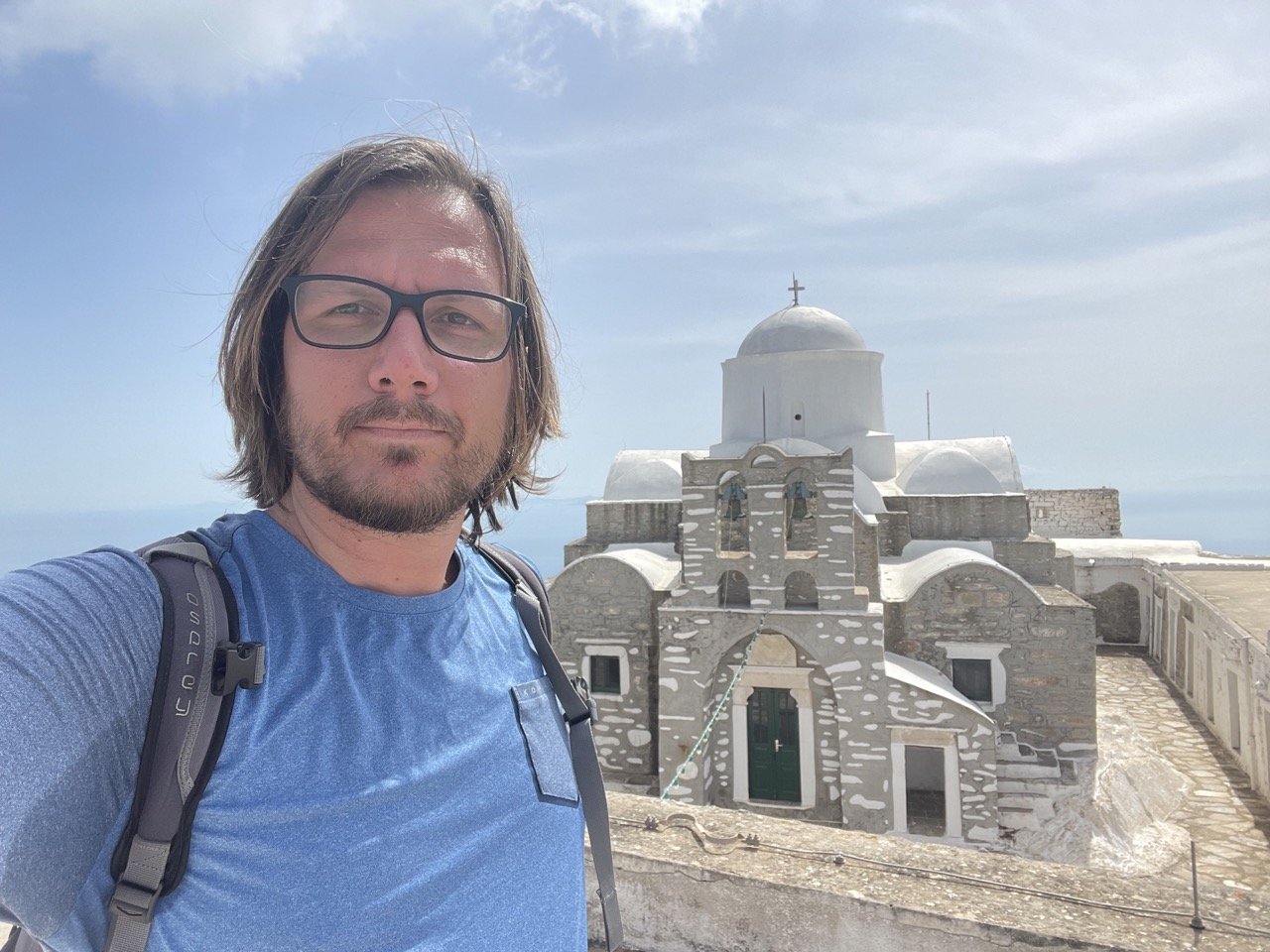





Connect with a Greece expert









































